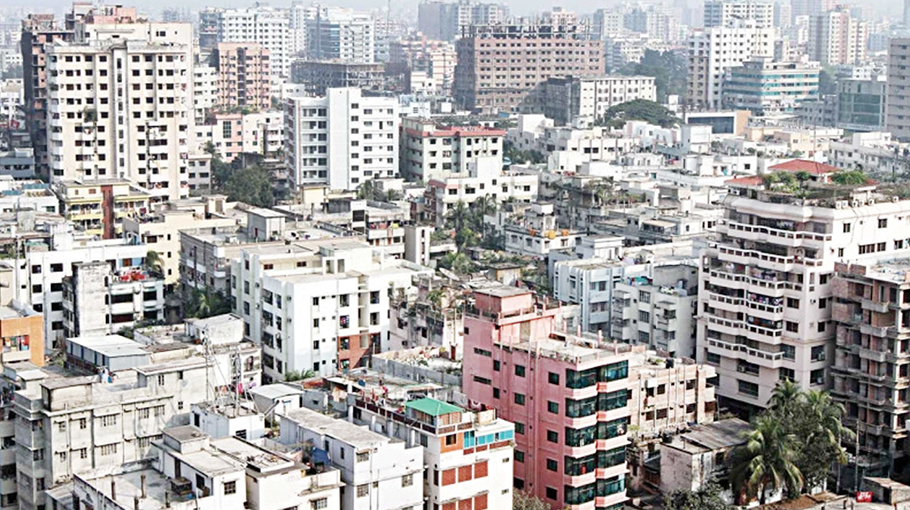Dhaka’s livability
Merge urban regeneration with public health: Experts

Dhaka, one of the most densely populated cities in the world, faces urgent challenges in urban development and public health that must be addressed to restore its livability, according to several research studies.
The research articles mention that Dhaka struggles with issues ranging from congested transportation to inadequate healthcare access with a population density of 30,093 people per square kilometre in 2022.
This confluence of problems significantly impacts the daily lives of its residents, making both urban regeneration and public health essential priorities for the city's future. Poor respiratory health is one of the most serious consequences of Dhaka’s contaminated air.
A study published in US-based Science Advances earlier this year revealed a staggering toll: between 2005 and 2018, Dhaka saw 24,000 premature deaths attributed to air pollution, the highest among 46 global cities studied. These findings
underscore the dire need for a comprehensive approach to urban development, where health concerns and environmental risks are addressed alongside infrastructure upgrades.
The rapid urbanisation of Dhaka has further compounded these problems. Insufficient infrastructure, poor sanitation, unplanned settlements, and environmental degradation have made the city increasingly difficult to navigate and live in.
The research article highlights the necessity of merging urban regeneration with public health initiatives, and two key studies from 2023 and 2024 offer insight into Dhaka's ongoing challenges while proposing innovative solutions.
In March 2024, a team from the University of Asia Pacific, led by Nawrose Fatemi, Zareen Habiba Islam, and Tahmina Rahman, examined the conditions in Old Dhaka—a historic area deeply entrenched in cultural significance but plagued by failing infrastructure.
The researchers emphasised the importance of reframing the Detailed Area Plan (DAP) to both improve liveability and preserve the socio-cultural identity of the community.
Their participatory approach, involving focus group discussions, key informant interviews, and urban design workshops, demonstrated that residents sought not only infrastructural improvements but also stronger community cohesion.
Dhaka’s air quality ‘unhealthy’ this morning
The study called for a balanced strategy, integrating top-down initiatives with grassroots efforts. Physical improvements like better drainage, enhanced road networks, and upgraded public amenities must be paired with efforts to preserve the community's unique cultural fabric.
Addressing these urban challenges requires balancing top-down planning with community-driven solutions, the researchers noted, reinforcing the importance of inclusivity in the regeneration process.
Similarly, another study published in Frontiers in Public Health in October 2023, by Mohammad Anisur Rahaman, Abul Kalam, and Md. Al-Mamun, focused on the public health crises arising from unplanned urbanisation in Dhaka.
Poor infrastructure in informal settlements, particularly slums, has led to severe public health risks, including outbreaks of waterborne diseases like cholera and diarrhoea, as well as respiratory issues linked to air pollution.
Beyond physical health, the study also highlighted the psychological toll on residents, with overcrowding and environmental stressors severely affecting mental well-being.
The researchers called for holistic interventions, such as upgrading sanitation systems, improving waste management, and increasing access to healthcare, to alleviate the public health burden. These measures, they argue, could dramatically improve both physical and mental health outcomes in Dhaka's most vulnerable communities.
Both research efforts point to the need for a multifaceted approach to urban regeneration—one that considers the physical, social, and environmental determinants of health. Policymakers and urban planners are encouraged to adopt a collaborative strategy, engaging government bodies, community leaders, and local residents in a shared vision for the city's future.
The Bangladesh Country Environmental Analysis (CEA), published in 2020, adds to the urgency, revealing that environmental factors such as air pollution, unsafe water, and poor sanitation are responsible for more than 272,000 premature deaths annually in the country.
These environmental challenges cost Bangladesh the equivalent of 17.6% of its GDP in 2019, with air pollution alone contributing to over half of these deaths.
To move forward, Dhaka’s urban regeneration must focus on improving physical infrastructure, addressing public health concerns, mitigating environmental risks, and fostering strong community engagement.
As Dhaka continues to expand, its challenge lies in becoming a city that is not only modern and functional but also liveable and healthy for generations to come.
According to Our World magazine, Bangladesh can also learn from China’s approach by creating decentralised economic opportunities in smaller cities and district towns, thereby reducing the pressure on Dhaka’s overburdened infrastructure.




